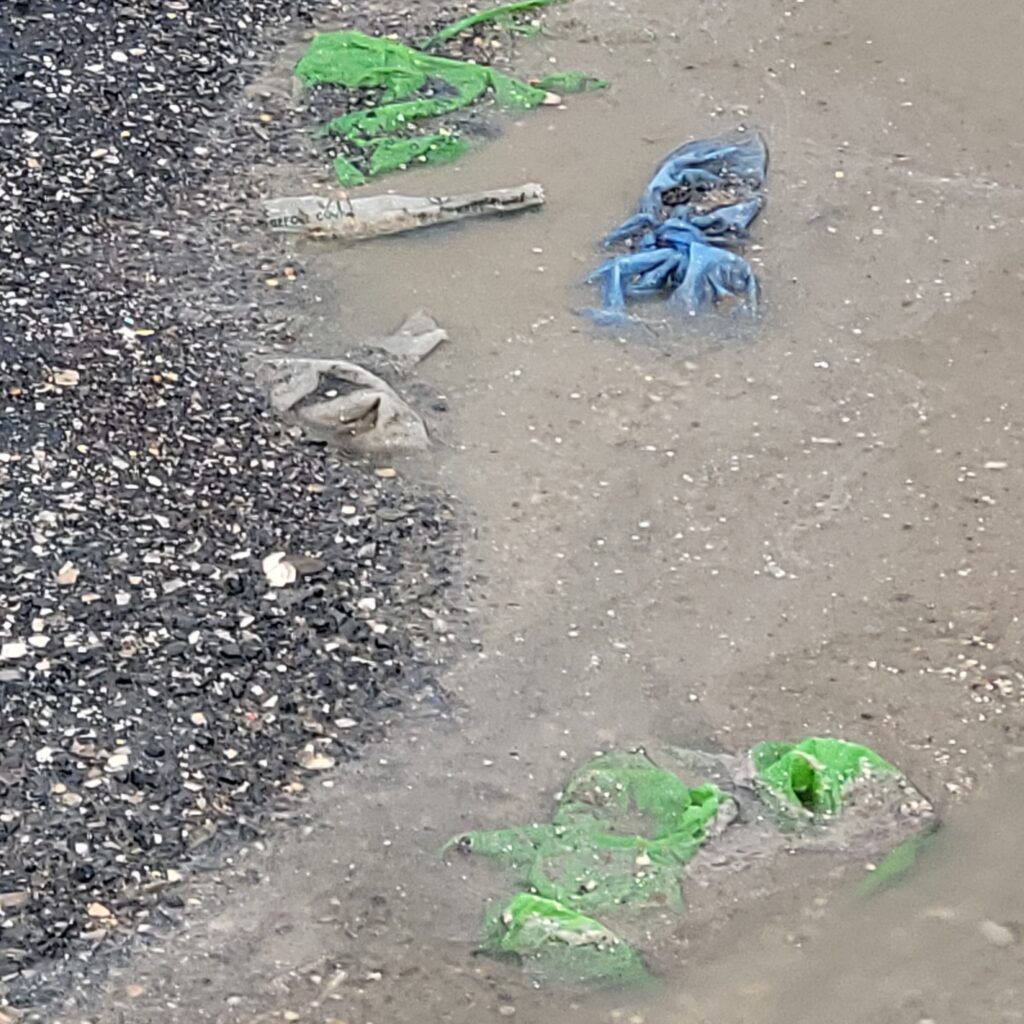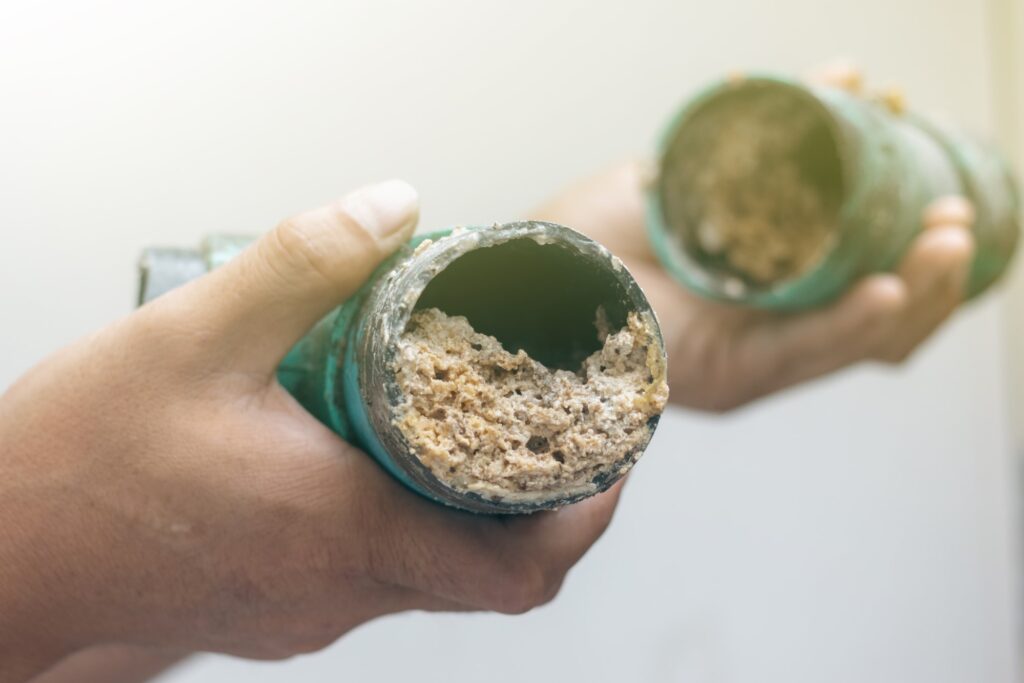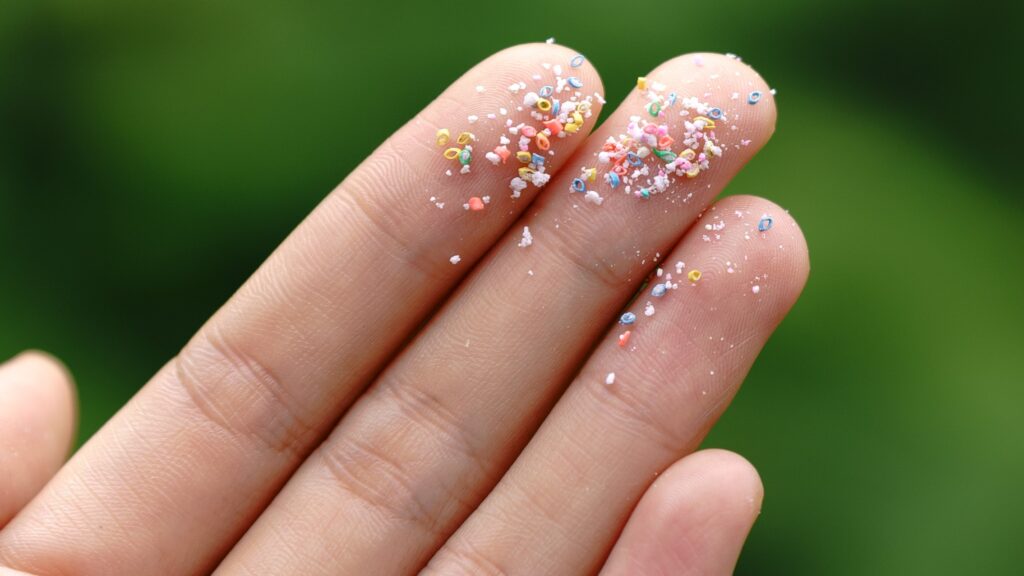Disposing of kitchen waste, hazardous items and chemicals
Whether you’re connected to our regional sewer system or rely on a septic system, there are some do’s and do not’s for proper disposal of organic, chemical, hazardous and/or common types of household waste.
Food waste | Chloride | Cleaning chemicals | Paint | Pet waste | Pharmaceuticals | Plastics | Personal products
Remember that properties connected to the sewer system are responsible for their sewer lateral, which is the sewer line that runs from the home to the street. When a sewer lateral gets clogged, it is expensive and messy to fix. You can minimize issues with your sewer lateral by only sending the appropriate items down the drain and toilet.
For many household items, Dane County Clean Sweep is a great disposal facility. Clean Sweep, located at the Dane County landfill site, not only accepts hazardous materials, chemicals and electronics for disposal, but also has a product exchange room where you can drop off or pick up unused portions of products like spray paint, pesticides, paint thinner, and more.
Food and kitchen waste
While some believe it’s best to send food waste down the drain via garbage disposal, most of the time, it’s actually best to put food waste in the compost or trash. Food waste can clog home plumbing or the sewer system.
FOGs and Dairy
Fats, oils and greases (also called FOG or FOGs) and dairy items like yogurt or cheese pose an especially high risk of forming clogs. Even liquids like olive oils or milk can lead to clogs, so they should not be poured down the drain.
Cool – Chill FOG in the fridge or to room temperature before tossing
Scrape – Scrape solid grease or FOGs into a lined trash can
Can – Collect liquid grease and oil in a can or sealed container, then toss
Wipe – Wipe grease, oils and debris with paper towels, then place used towels in the trash.
For large quantities of leftover cooking oil (from a deep fryer, for example), let the grease cool to a safe temperature and transfer it to a container with a lid. City of Madison residents can bring containers to a cooking oil dropoff location. Alternatively, add an oil solidifier or kitty litter to the oil to absorb it, then put it in the trash.
For more information, read our blog article “FOGs clog: No fats, oils and greases in drains.”
Compost
Composting is a great way to sustainably reuse compostable food scraps. If composting is not an option, food waste can go in the trash bin. The Dane County Department of Waste & Renewables and the City of Madison Streets Department both have great resources and how-tos on composting. Or, visit our blog “Protect your pipes this season” for additional compost ideas.
Coffee Grounds
Rather than breaking down, coffee grounds clump together in water. Over time, grounds can build up in drains and pipes to create clogs. It’s better to put coffee grounds in the garbage can or compost bin.
Grains and Carbs
Grains, like pasta, rice or oats, should not go down the garbage disposal or drain. Solid carbohydrates and starchy foods can get tangled in the garbage disposal or swell up and clog pipes. Putting cooked or uncooked pastas, rice, breads and grains in the compost can attract pests, so be sure to bury it under carbon-rich materials like leaves. If you’re not a composter, put these items in the trash.
Freezer Packs
Freezer packs, like those sent with meal delivery kits, should not go down the drain. The gel and liquid found inside of freezer packs has potential to cause clogs in pipes. Follow the manufacturer’s instructions to dispose of freezer pack liquid or head to Dane County Clean Sweep for disposal of these packs.
For more information and ideas on what to do with food waste – garbage disposal, compost or trash – read our blog article “Household items: Garbage disposals, toilets or trash?“
Chloride or water softener salt
View our Salt Reduction for Residents and Chloride FAQs pages for more information on water softener salts, salt pellets or granules for winter maintenance.
Cleaning Chemicals or Bleach
Always use bleach and other cleaning chemicals as instructed on the container. As long as you use bleach or other chemicals according to the directions, they can be rinsed down the drain. However, you should never dump undiluted bleach down the drain due to the potential for hazardous reactions with other substances. If you have large amounts of a chemical that you want to get rid of and you’re not able to use it up as directed, you can take it to Dane County Clean Sweep.
Paint
Leftover paint, varnishes or rinse water from painting projects should never go down the drain in liquid form regardless of the type of paint. However, what the paint is made of will dictate proper disposal techniques. When in doubt, take any leftover paints and solvents to Dane County Clean Sweep.
- Latex paint – Latex paint is water soluble but it can clog pipes in large amounts and the treatment plant doesn’t remove its acrylic polymers during processing. To dispose of latex paints, like many house paints, dry out the paint in the can and place it in the normal trash. If there’s enough paint left in a can that it’s taking a long time to dry out on its own, adding a paint hardener powder (available at hardware stores) can speed up drying.
- Acrylic paint – Acrylic paints, like art paints, are okay down the drain in small amounts. It’s fine to rinse brushes in the sink and pour glasses of rinse water down the drain. Larger amounts should be treated like latex paint.
- Oil-based paint – Oil-based paints should NOT go down the drain. Neither should solvents used for cleaning brushes with oil paint on them. Dispose of oil-based paints at Clean Sweep.
- Paint thinner – Paint thinners are hazardous wastes, so they should not be poured down the drain. Instead, these materials are accepted by Clean Sweep for disposal.

Pet Waste or Kitty Litter
Pet waste should not be flushed down the drain due to the extra demand it places on the wastewater system. Unlike human waste, pet waste contains elements like grass, dirt, raw hide, hair and materials that can create blockages in pipes.
Pet waste should always be placed in the outdoor trash or waste management receptacle. Kitty litter, even if it’s labeled “flushable,” can cause clogs in the sewer system and also should be placed in the trash.
Never flush pet poop that’s been bagged down the drain. Even if the doggie doo bags are labeled as biodegradable or flushable, they are not safe for your plumbing and our sewer infrastructure. Always put dog poo in the trash.
Pictured at right: used dog poop bags that created a clog at a pumping station in Madison.
Pharmaceuticals
Medicines, vitamins, pills or other pharma items belong in the trash, not toilets. That’s because most treatment plants aren’t designed to remove the chemical compounds in medication. When medicine, pharmaceuticals or hormones are dumped down the drain, their chemicals end up in local waterways and impact aquatic life. Learn more about proper disposal of medications through programs like Med Drop or take back events on our pharma waste page.
Plastics and microplastics
Plastic waste, including microplastics and microbeads, must be disposed of properly. Microplastics are tiny particles of plastic that are typically found in health and beauty products like face and body scrubs, shampoos, cosmetics and more. Other household items may contain plastics and should not be flushed:
- Contacts – Contact lenses belong in the trash; never put contacts down the sink or toilet.
- Pods – Use of detergent pods with PVA film for laundry washing machines or dishwashers should be avoided – about 75% of the PVA from pod films remains in tact after passing through treatment
- Glitter – Glitter in makeup, eye shadow, lipstick and other cosmetics is notoriously tricky for natural systems; environmentally-friendly glitter just doesn’t exist. Glitter is persistent and, thanks to its small size and nonbiodegradability, nearly impossible to remove from the environment once it meets waterways.
The treatment plant is not designed to remove plastic materials or microplastics; any microplastics that arrive at the plant will end up in the treated effluent or in biosolids. So, the best way to prevent microplastic pollution in the environment is to reduce your use of plastic products. Choose sustainable products for personal or household use when possible. Or, learn more about microplastic disposal in our blog article “Reducing plastic and microplastic pollution in our waters.”
Bathroom and personal products
Toilet paper is the only manufactured bathroom item that’s okay to flush. TP is designed to break down completely in water and will not cause issues in the sewer system or the environment when flushed. However, there are a host of other bathroom and personal items that require special attention when disposing, like flushable wipes, condoms, feminine or menstrual products, facial tissues and more.
Proper disposal of most bathroom and personal products can summed up in a simple phrase “Trash it.” Even if the products are labeled as flushable or safe to flush they really don’t belong down drains or toilets. Learn more about nonflushable or unflushable bathroom items and see what’s okay (and what’s not okay) to flush in our fun videos and resources.
Some household items, like mercury-containing devices, pesticides, appliances, electronics and more can be hazardous to public health or the environment, so they should not go into the regular trash or down the drain. Fortunately, there are several sites in the area for you to safely get rid of those items. For more information on disposing or recycling household waste, read our blog article “Moving out waste guide: Where to throw it out.”










